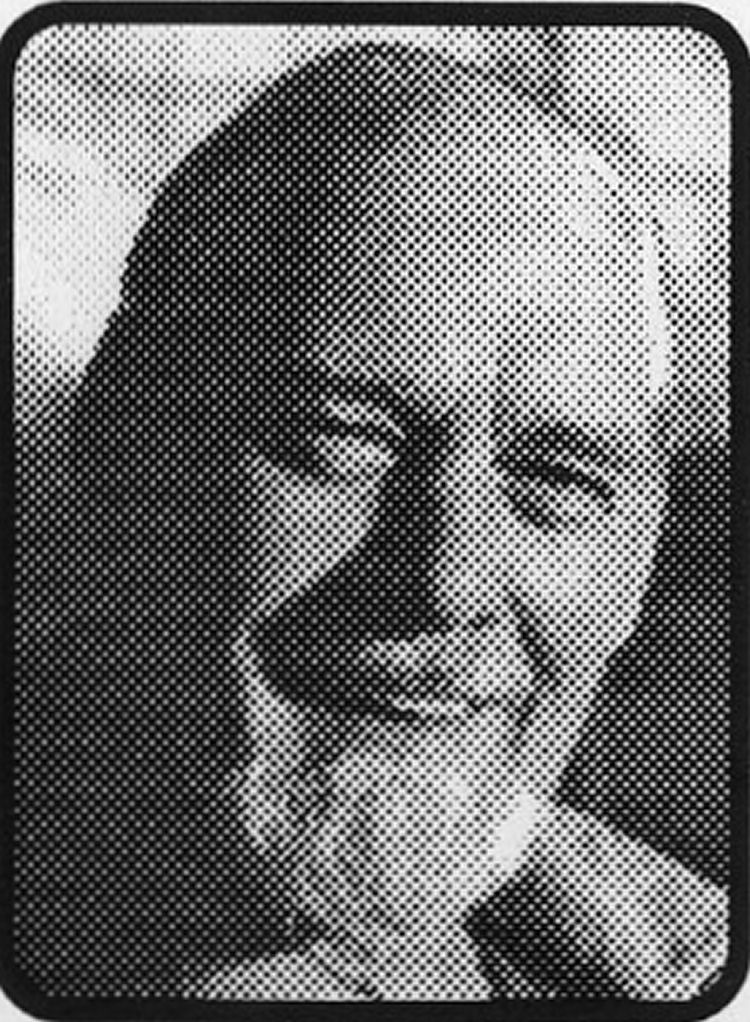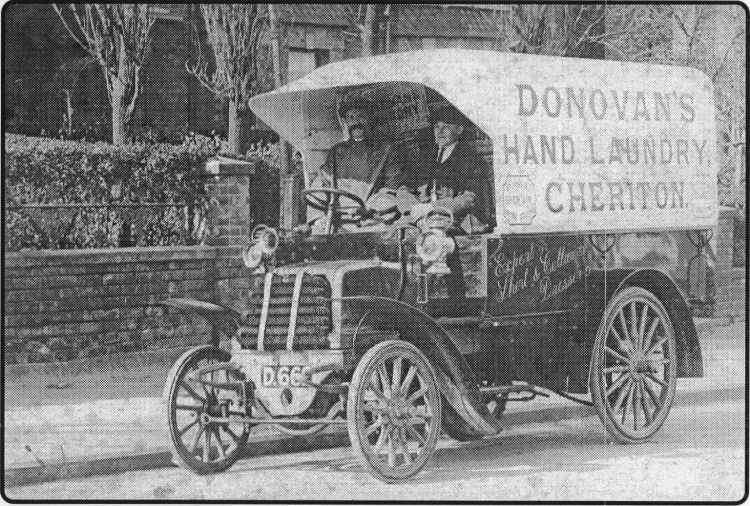
Published 4 December 2003


Chris Ashman tells of one family’s war
NOVEMBER is a particularly significant month for the family of Memories
reader Chris Ashman, of Hawkinge. In the First World War, his grandfather,
Herbert Ashman, of Dover ‘disappeared,’ feared dead, fighting on the Somme,
but eventually turned up in a PoW camp.
In the Second World War, his father’s brother, Frederick Ashman, of Dover,
serving in the Royal Air Force, died in a raid flying' in a Lancaster bomber
over Berlin.
On a brighter note, however, both his parents, father Bertram and mother
Beryl (nee Wilson) celebrated their birthdays in November.
Bertram was a telegraphist and taught morse code leading up to the Second
World War, but progressed to studying wireless at Fort Bridgewood, Chatham,
and at 16, } joined a select band of 40 secretly recruited school leavers
who were singled out for intelligence work, Chris told me.
More wireless training followed at Beaumanor Park in Leicestershire, the
youngsters becoming ‘experimental wireless operators’, listening to enemy
messages and trying to pinpoint their location.
The information was passed to the highly secret Bletchley Park decoding
centre in Buckinghamshire, the work of which was highlighted in a television
documentary some months ago.
They were posted to ‘wireless hut sta-
tions’ around the country, and in Bert Ashman’s case, close to home, which
was then at Lenham.
He carried out his intelligence work in the greatest secrecy - even to his
own family - in solitary, eight-hour shifts, until the end of the war in
1945.
It was a good 30 years before the family could be told the nature of the
work done by Bert, who is a retired police officer now living in Dymchurch.
This had evidently been a source of some frustration for Bert, and probably
explains why, once the wraps were off, he set out to trace and find out what
happened to some of his service colleagues.
They had been recruited as schoolboy wireless operators in the Medway area,
although Bert came from Dover.
Through electronic mail he has had some success in getting in touch with old
friends. Any others he has been unable to trace can teach Bert by email via
his son Christopher. ashman@btinter net .com
Grandfather Herbert, who spent the majority of his life in Dover and Lenham,
was taken prisoner in 1916 and spent two years as a PoW, said Chris.
Most of his unit had been wiped out and in the confusion of war he ended up
unconscious and alone on the battlefield except for enemy soldiers and was
captured.
Herbert was a clerk at Dover Co-operative stores before he joined the East
Kent Buffs Regiment, at the age of 19. He joined up in
Kitchener’s ‘New Army’ at Canterbury, assigned to ‘B’ Company of the 7th
Buffs (East Kent Regiment) attached to the 55th Infantry Brigade - his pay a
shilling a day.
His unit underwent vigorous training at Colchester, and were considered
ready for service in France in April 1915.
The 18th Division went on to serve with distinction on the Western Front.
As a PoW he worked in pig-iron works. His boots rotted and were replaced by
clogs, then an accident cost him a toe.
When peace came, PoWs were dressed up for a photograph and a postcard
version of a group photo reached his family.
Herbert returned to his parents’ home,
which was The Bun Shop, at 18/19 Market Square, Dover, in November 1918.
Four years later he married Edith Marsh. The couple had two boys, Fred the
airman, and Chris Ashman’s father Bertram.
Chris - well known in the music business - knew his uncle Fred Ashman, a
navigator in the RAF, died after after baling out of his aircraft over
Germany, in 1943, but only in recent times, researching his family tree,
could he piece together the story.
And he learned that Fred’s memory is still marked annually by Dover Grammar
school, in awarding the Frederick Ashman memorial prize for mathematics.
Bertram Ashman, 76, a retired policeman living in Dymchurch, had a vital
role to play in intelligence during the Second World War. See the story
below related to me by his son Chris.
The other fine photograph, of a former Cheriton laundry van with heavy gun
carriage-like wheels, is from among family photographs shown to me by Chris,
who lives with his family in Hawkinge and is well known on the Kent music
scene.
 |
Former Sandgate minister chosen mayor of Marylebone
A QAOTHE Rev H Russell Wakefield, a former Sandgate vicar and district
councillor, was reported to have been created an alderman and selected
as mayor of Marylebone. With the death of former butcher S Hobday Major,
who left a widow and six children, a link with ancient Folkestone was
broken, reported the Herald. Major started his business in 1857 in Beach
Street and married the daughter of another butcher, Alderman Caister,
moving his shop and home in the mid-1860s into the old Wesleyan chapel.
His butcher's shop was one of the finest in the country. But one day the
building suddenly split in half, right down the centre, and he was
forced to move to Rendezvous Street. He rode in the old Folkestone
steeplechases and at Turlingham race course. He also rode with the
hounds of the East Kent Hunt. His son, Thomas Caister Major became the
council's weights and measures inspector before himself entering the
butcher's trade and moving to Cardiff. The fishing community was stunned
by the loss of fisherman John W Taylor, aged 68. A seaman since he was
ten, he fell overboard and attempts by the crew to save him failed.
|
Shops boss, wife and family of 13 celebrate anniversary
«< qaqMORE than 30 men helped haul the .L«/^Obody of a heifer out of a
well at Lyminge after the apparently docile beast, being driven along a
road, took it into its head to leap over a hedge into a meadow. It
landed on top of the wooden cover of an old well, smashing it, and
plunged down the shaft. Evidently injured internally, it was dead on
being hauled to the top. Eileen Brown, a woman from Brixton described as
one of the best shoplifters in London and a member of the 'Forty Thieves
Gang', was convicted of theft at Folkestone Quarter Sessions after three
women made a round of Folkestone shops. Missing goods included a fur
coat in her possession. She was given 18 months' hard labour. Head of a
well known chain of east Kent shops, Goulden and Wind, Henry James
Goulden, 78, and his wife, of Radnor Park West, celebrated their golden
wedding with a reunion attended by all but one of their seven sons and
six daughters, one daughter was in Australia. The business dated back to
1840, having started in Canterbury. Blue Band Margarine had a large
advertisement in the Herald in which they listed over 75 schoolboys and
girls in the Folkestone district who won cash prizes in a handwriting
competition held by the firm.
|
Hythe s first new fishing boat for years launched
qfqTHE Herald pictured the first new 30 fishing boat for Hythe for many
years, the FE 101, built at Rye for Messrs Griggs (Hythe) Ltd. On board
when the cameraman took the photo were Mr Wright Griggs, junior, the
skipper and Mr H Griggs. More than 1,000 birds were entered in 120
classes at Folkestone's annual open Fur and Feather show at the local
drill hall by enthusiasts from all four corners of the UK. The show was
one of the top five in the country, said the Herald. Tributes were being
paid 50 years ago to Sir Philip Halden, of Lympne Place, who died aged
73 after devoting a lifetime's work to the shipping industry. Sir Philip
was president of the Chamber of Shipping at the time of the Battle of
Britain and was a recognised authority on that particular form of
merchant ship known as the tramp steamer as well as merchant shipping as
a whole. The local shipping fraternity was saddened at the death of
former commodore of the Channel fleet Capt George Thomas Blaxland, 82,
who lived in Audley Road. In 29 years it was estimated he crossed the
Strait over 8,000 times!
|
Councillors study options for future of the town hall
>| Q^ Q COUNCILLORS on the district council's I O amenities committee
recommended the town hall should not be sold for commercial development
but that a final decision on its future should be postponed for a year.
Among ideas being looked into were its possible use for a once-weekly
market - possibly for antiques - or as an alternative leisure venue
during renovation of the Leas Cliff Hall. It was also felt more time was
needed to assess what community use it might serve, to consider whether
the publicity section of the recreation and amenities department might
be housed there because of its central position, and to sound out the
potential for letting. A public meeting was being held at Cheriton to
discuss problems connected with the route of the M20 extension from
Sellindge to Folkestone, work on which was due to begin at the Swan
public house, Sellindge. A Cheriton man was remanded in custody charged
with the murder of Olive Stone, in Folkestone. Eighteen journalists
working on the Herald and its midweek South Kent Gazette newspaper went
on strike over a pay claim and the paper was being produced by the
editor David Wynne-Jones, who was not a union member. |
|



